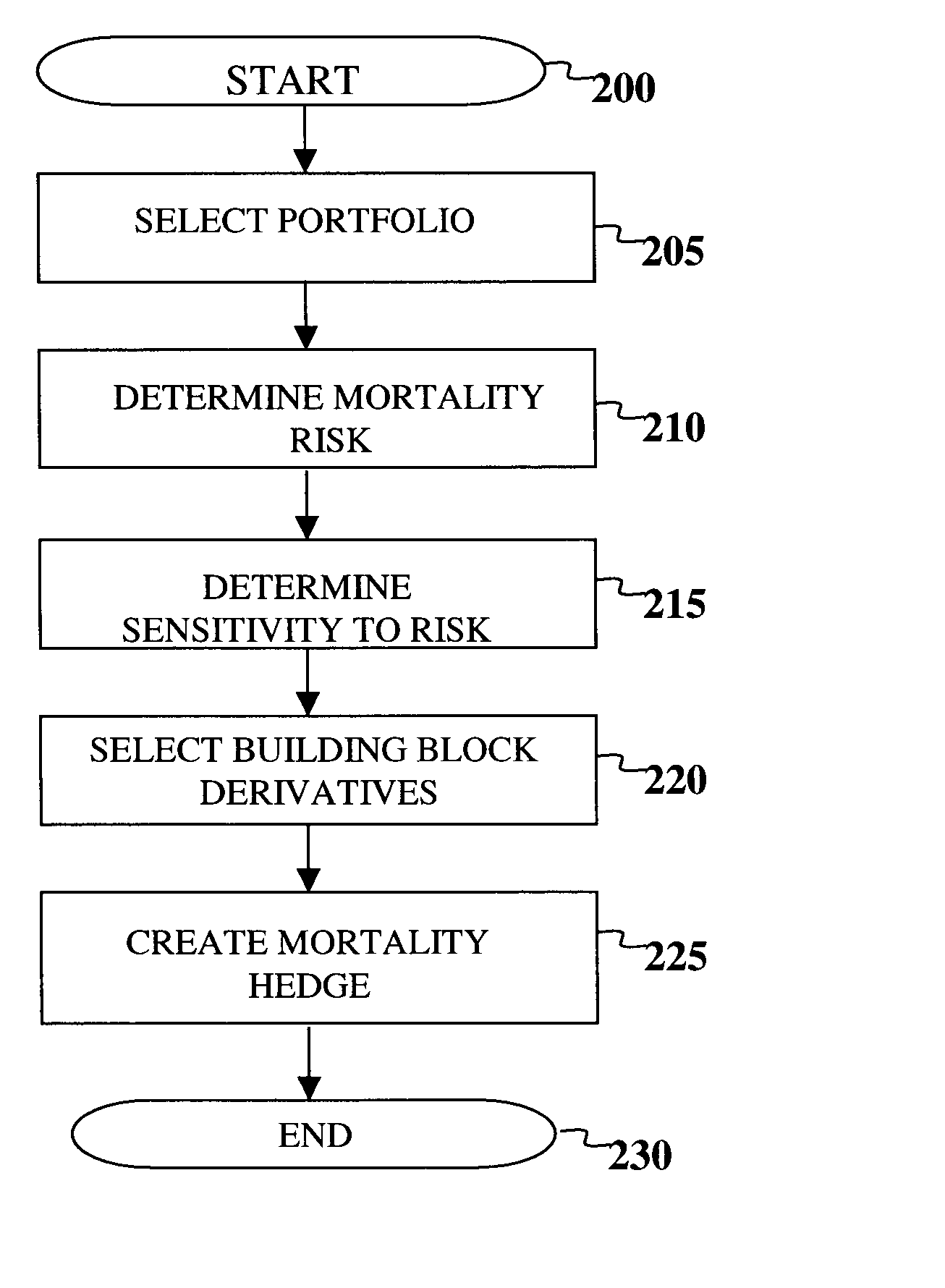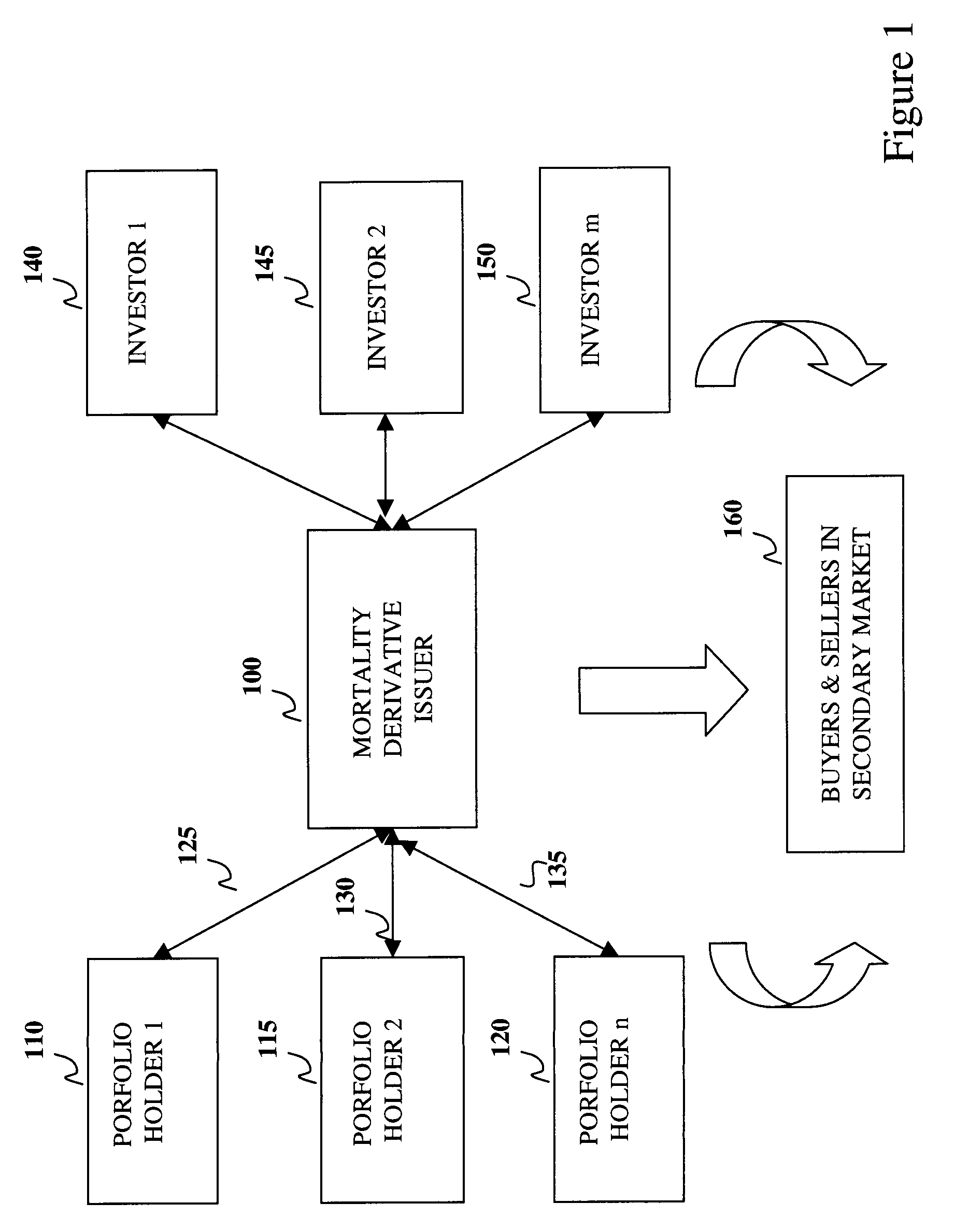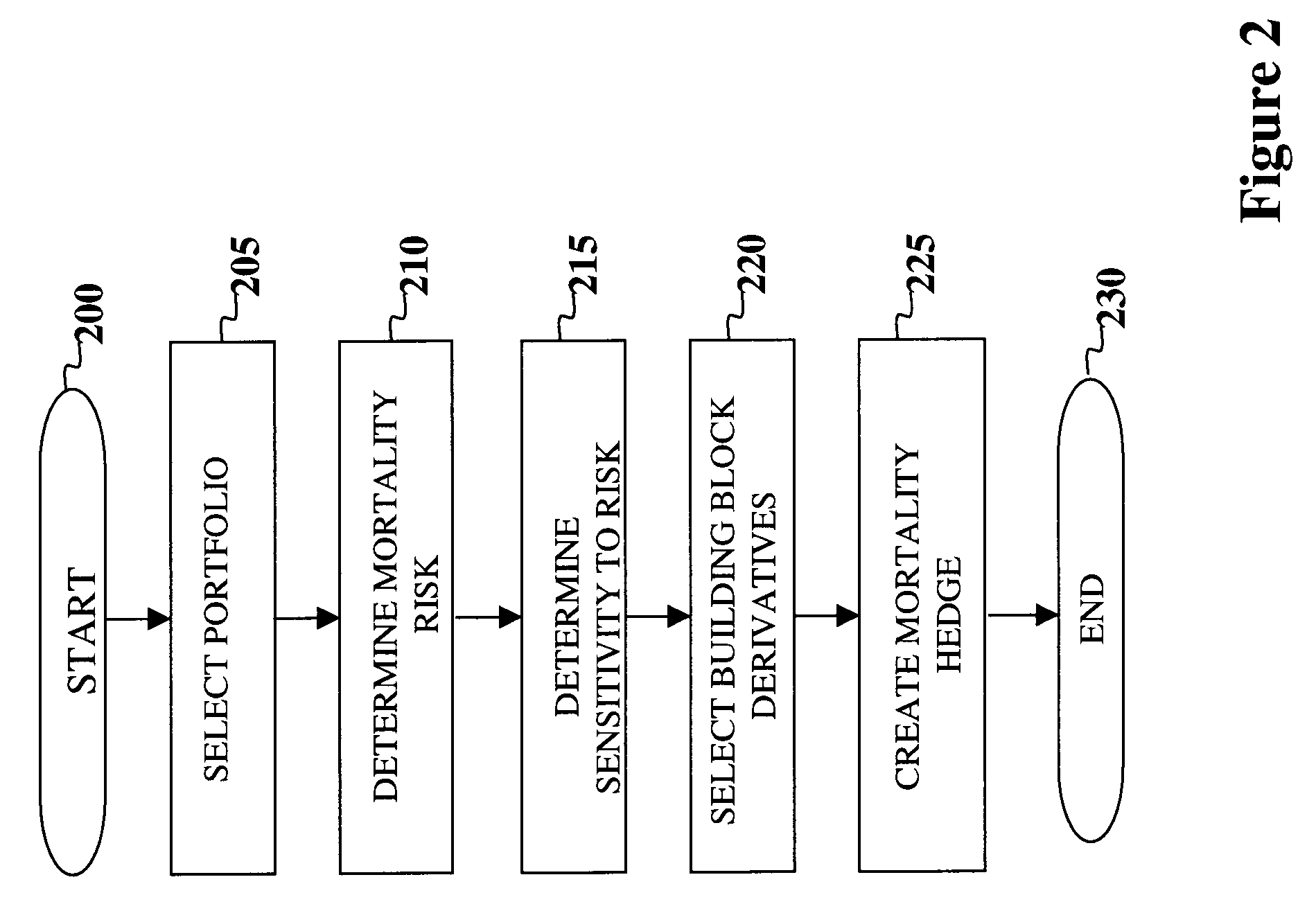Importantly, mortality-based instruments have mortality risk for the sponsor / issuer / company, sometimes referred to as the “mortality
exposure” of a portfolio.
Instruments like insurance annuities and pension plans have longevity risk, i.e., there is financial risk associated with the portfolio members living longer than expected or projected, thus receiving more payments over more years.
Instruments like life insurance contracts have mortality risk, i.e., there is financial risk associated with the members dying earlier / faster than expected, thus resulting in payoffs occurring earlier than expected at a greater cost to the insurance company.
Longevity risk is associated with falling mortality rates, usually mortality rates falling more quickly than projected and, typically, as factored into the price of the instrument.
Mortality risk is associated with either rising mortality rates, or at least, mortality rates failing to fall as quickly as projected and factored into price.
The risk to the portfolios of insurance companies, pension plans, and other holders or issuers of mortality-sensitive instruments, can be profound.
In a $5 billion defined benefit pension plan, that may translate to an unanticipated future $250 million shortfall.
Thus, this longevity risk can rapidly turn a fully-funded pension plan into a seriously-underfunded pension plan, especially if the pension plan has other provisions (e.g., inflation adjustment) that provide a multiplier effect to the longevity risk.
A famous example of the potentially catastrophic results of failing to properly account for mortality exposure was the Equitable Life Assurance Society disaster in the late 1990's.
The longevity risk of those annuities contributed to the eventual downfall of Equitable Life, which closed to new business in 2000.
That, of course, was the mistake in the Equitable Life debacle, where 1950's mortality rates were applied to contracts issued decades later in a
population with significantly-reduced mortality rates.
But it cannot be used to predict future mortality rates with deterministic certainty.
Since the
mortality rate apparently cannot be quantified deterministically, there is no ready mechanism to remove or greatly mitigate mortality risk in mortality-sensitive instruments (or portfolios of them) by adjusting the price or other structural aspects of the instruments.
Such customized derivatives to hedge for mortality risk suffer a number of significant drawbacks.
Because they are customized to the hedging party, they entail expensive negotiation costs to deal with the custom, non-standard terms.
As customized private derivatives, it may be difficult to find buyers to assume the mortality risk the hedger seeks to transfer.
Because they are customized and non-standard, these customized derivatives tend to be very illiquid, i.e., it is difficult to find secondary buyers and thus virtually impossible to establish a secondary market.
Because the payout of these customized derivatives may be based on a measurement
population (e.g., all English / Welsh males aged 65) that does not match or correspond to the portfolio
population, there may be “basis risk” that the hedge's
reference population does not correspond to the portfolio's member population.
More broadly, there is no systematic technique for determining the mortality risk of individual portfolios, creating a comprehensive portfolio-specific hedge using standardized mortality derivative building blocks, and buying and selling those mortality derivative building blocks in both primary and secondary markets in a highly liquid fashion that permits the efficient transfer of mortality risk from hedging parties to investors.
Other problems and drawbacks also exist.
 Login to View More
Login to View More  Login to View More
Login to View More 


